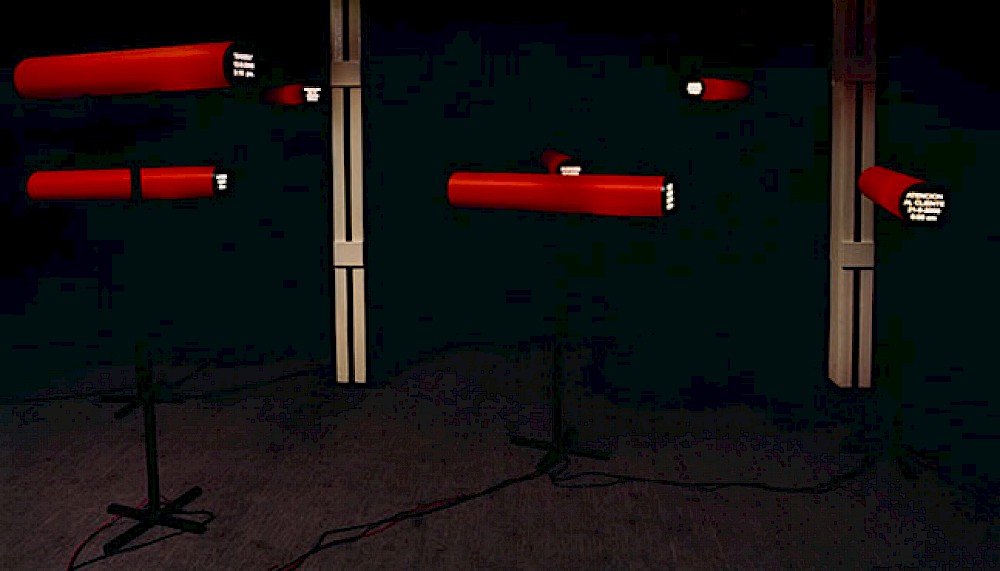Black box, routines, ghosts By Eva Grinstein
Less than two years ago, Fernando Lancellotti showed the works of a series that he named ‘Demasiado Fugaz’ (Too Fleeting). It was about enormous black figures that represented anonymous, everyday people, numbered by means of a mechanism with a sensor that increased the numbers as the observer passed in front of them. The relation between numbers –paradigmatic symbols of rational order– and people –who are a combination of feelings and passions not easy to rationalize– caused a tension of meanings as unavoidable as uncomfortable.
In his actual presentation, ‘Caja Negra’ (Black Box), numbers and people appear once again linked to each other, however with new elements at stake. The hall is in semidarkness and we are thus forced to concentrate on eight lightened tubes, which are spread across the place. Each one of them combine image and sound: on one side, you can read a brief text in which the name of a geographical location, a date, and a time-table are placed; on the other side, voices, melodies or noises are heard, which we quickly tend to associate with the data provided at the other end of the device. Recording of actions. Portraits of moments. The fixing of that which flows.
Customer service: the recorded voice of a woman announcer repeats in loops the options that the bank allows to be carried out by telephone. Subway D line: a man with AIDS, walking the wagons, requests a hand-out from the same passengers that no longer see or hear him because they see him every day at the same hour. Mexico 308: somebody closes a door, a liquid noise is heard, and then the unmistakable sound of the toilet deposit been
filled after the chain is flushed. Everyday activities, so frequent they become invisible. The artist cuts them out of their context and brings them into the hall, pointing at them with the orange phosphorescence from the planes’ black boxes. He suggests they’re almost like physical witnesses of that which is not otherwise seen.
The black box of the plane, a ghost in the collective imaginary –we’ve never seen one, it’s hardly a reference associated with catastrophes and ghastly news– is the image, real or symbolic, that permeates this work of Fernando Lancellotti. Even though each piece reveals a scene, the installation cannot be considered as a narrative piece; there is neither a story nor a conflict to be solved. Only time repeating itself, human beings repeating themselves, routines becoming routine to become, just as the black box, ghosts never seen and yet known.
